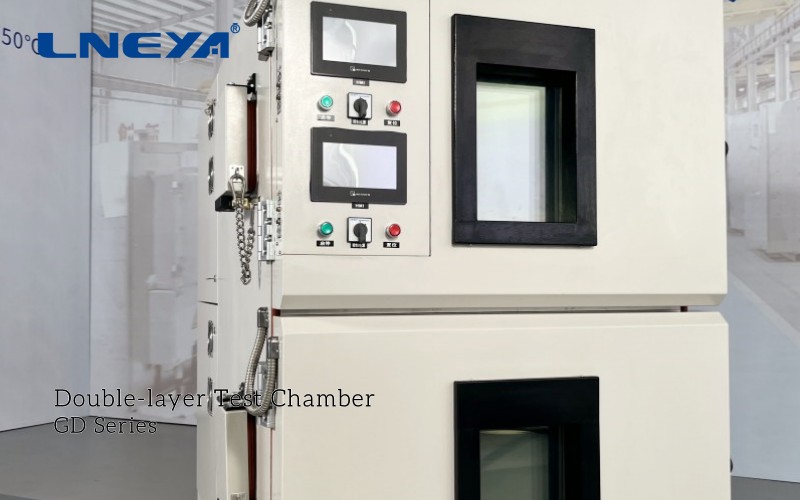Pourquoi les tests de puces ont besoin de refroidisseurs de semi-conducteurs

- Compression Chillers vs Absorption Chillers Key Differences Efficiency and Applications
- What Are the Common Types of Chiller Compressors
- Hidden Costs of Chillers Quotes
- Industrial Chiller vs Industrial Freezer
- What Are Water-Cooled Condensers
- Custom Chiller vs Standard Chiller
- Qu'est-ce qu'un refroidisseur à air ?
- Qu'est-ce qu'un refroidisseur à eau ?
- août 2025
- juillet 2025
- juin 2025
- mai 2025
- mars 2025
- février 2025
- janvier 2025
- décembre 2024
- novembre 2024
- octobre 2024
- septembre 2024
- août 2024
- juillet 2024
- juin 2024
- mai 2024
- avril 2024
- mars 2024
- février 2024
- septembre 2023
- juillet 2023
- juin 2023
- mai 2023
- janvier 2023
refroidisseur à air refroidisseur Installation d'un refroidisseur refroidisseurs Assemblage froid Congélateur refroidisseur d'eau refroidissement chauffage circulateur système de refroidissement et de chauffage système de refroidissement Réacteur en verre double couche système de contrôle dynamique de la température congélateur refroidisseur de gaz circulateur de chauffage refroidisseur industriel refroidissement industriel congélateur industriel réfrigérateur industriel réacteur à double enveloppe refroidisseur de liquide refroidisseur à basse température nouvelles refroidisseur pharmaceutique refroidisseur de processus refroidisseur de réacteur refroidissement du réacteur refroidissement du réacteur chauffage chauffage du réacteur refroidissement système de réacteur circulateur réfrigéré refroidisseur de réfrigération refroidisseur à vis refroidisseur de semi-conducteurs refroidisseur pour tests de semi-conducteurs sundi tcu contrôle de la température chambre de test thermostat refroidisseur à ultra basse température refroidisseur pour essais de véhicules refroidisseur d'eau refroidisseur à eau wtd
Every microchip goes through a long road before it finds its way into a phone, a car, or a medical device. The process does not end after production. Each chip faces strict testing to prove its reliability and performance. Without testing, no fab can ship products that meet the speed, power, and safety standards customers expect.
Temperature control sits at the center of chip testing. The tiny structures inside wafers react instantly to heat. Even a small shift in degrees can cause errors in measurements, false failures, or worse—chips that pass the test but fail in real-world use. To solve this, fabs rely on refroidisseurs à semi-conducteurs. These systems keep test conditions stable, precise, and repeatable.
What Is Chip Testing?
Chip testing, sometimes called IC testing, is the step where each integrated circuit is verified under different operating conditions. It checks whether the chip performs according to its design before it leaves the factory.
Tests can happen at wafer level or after packaging. In wafer probing, hundreds of chips on a wafer are checked in parallel. After packaging, the devices are tested again to confirm the package did not introduce defects.
During these stages, engineers apply voltage, current, and signal patterns while monitoring the chip’s response. They stress the device with temperature swings, high workloads, and voltage shifts. The goal is to uncover weak points before the chip reaches the customer.

The Key Projects in Chip Testing
Chip testing covers many areas. Some of the most common include:
- Functional testing: Does the chip do what the design intended? This test runs logic operations, memory checks, and timing analysis.
- Parametric testing: Engineers measure electrical properties like resistance, capacitance, and leakage. These numbers reveal whether the chip can perform within spec.
- Burn-in testing: Chips are run at high temperatures and voltages for hours or days. This simulates years of real-world use in a short time.
- Environmental stress testing: Here, chips face extreme cold and heat cycles. This proves they can survive automotive, aerospace, or industrial applications.
All of these projects share one thing—temperature control. Without a reliable cooling system, the results are inconsistent. That is where semiconductor chillers enter the picture.

Why Chip Testing Needs Semiconductor Chillers?
A chiller may look like just another box on the production floor, but in chip testing it is essential.
Contrôle de la température
Heat is unavoidable. As chips process signals, they generate heat. Testing equipment itself also adds more heat. If the test board warms up, the chip under test no longer sees the conditions engineers intended. The numbers become unreliable.
Simulating the real world
Chips must face real-world temperatures. A phone processor might need to work at -20°C on a winter morning or 45°C inside a hot car. Chillers allow test systems to swing between these points with tight accuracy. Without them, stress tests cannot simulate real-life use cases.
Haute précision
Imagine a test where the setpoint is 25°C, but the actual temperature drifts by 2°C. That tiny swing may cause the chip to fail in the lab even though it would work in the field—or worse, pass in the lab and fail later in a customer’s hands. Chillers stop that drift by holding temperature within fractions of a degree.
Fiabilité
Testing hundreds of wafers each day is expensive. If equipment overheats or delivers inconsistent data, production slows and yield drops. A well-designed semiconductor chiller keeps lines moving, results accurate, and scrap rates low.
How to Select a Semiconductor Chiller for Chip Testing?
Not every cooling system is ready for chip testing. Engineers must balance speed, precision, and reliability when making a choice.

Plage de température
Tests often push chips through extremes, from cryogenic lows to scorching highs. A capable chiller can span -80°C to +200°C and shift between points without lag.
Précision
A system that holds steady within ±0.02°C ensures that results are consistent and reproducible, instead of drifting with each cycle.
Capacité de refroidissement
A tabletop setup may draw only a few kilowatts, while a burn-in chamber can demand far more. Matching cooling power to the actual load prevents test interruptions.
Response speed
When conditions change, the system must ramp up or down quickly. Slow transitions waste time and create bottlenecks. Advanced models manage sharp heating and cooling swings with ease.
Connectivity
Modern chillers link directly to wafer probers and automated test equipment. Protocols like RS-485 or Ethernet allow smooth communication and remote control.
Fiabilité
Semiconductor fabs run around the clock, so breakdowns translate into real losses. Choosing equipment with proven uptime, accessible service, and long life helps secure production goals.
For cutting-edge fabs, options such as recirculating chillers, cascade refrigeration, or chiller heater systems deliver the flexibility needed for diverse and demanding test programs.
Conclusion
For fabs, choosing the right semiconductor chiller is as critical as selecting the right tester or probe card. If your team is planning new test lines or facing stability issues with current setups, it may be time to upgrade. Our refroidisseurs à semi-conducteurs are built for accuracy, fast response, and non-stop operation in demanding fabs.
Reach out today and let’s discuss how the right chiller can support your chip testing goals.
Refroidisseurs associés
CONTACTEZ-NOUS
TEL:
EMAIL:
WeChat et WhatsApp:

Wechat QR

Vous avez une question ou besoin d'un devis ? Remplissez le formulaire ci-dessous et notre équipe vous répondra sous 24 heures.
 LNEYA Industrial Chillers Fabricant Fournisseur
LNEYA Industrial Chillers Fabricant Fournisseur
















